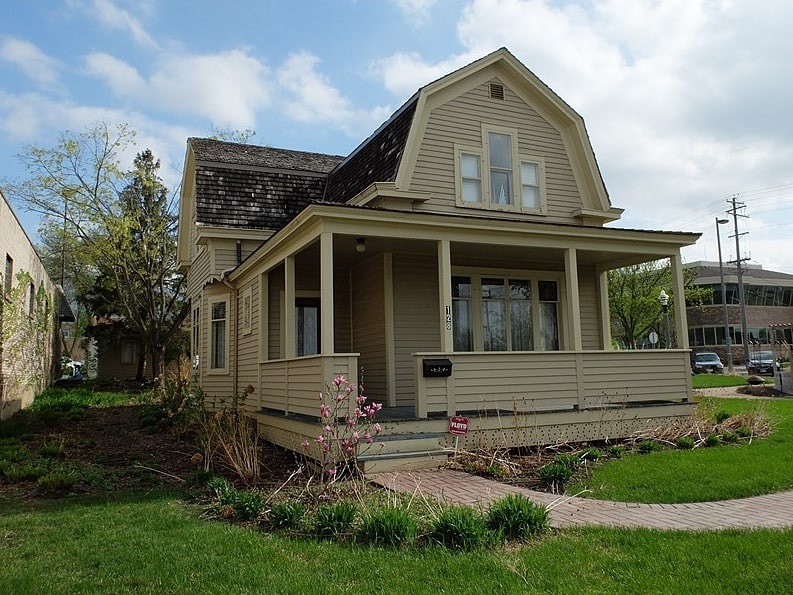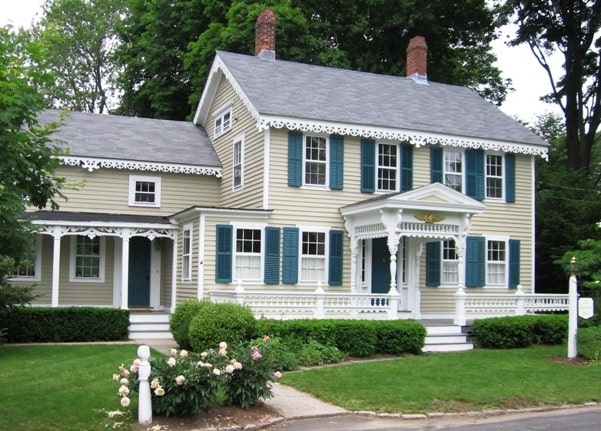Have you ever wondered, “What’s the history of my property?”
In the context of genealogy, much of the conversation is about the people. However, figuring out how to find the history of a house can reveal who built the property, who lived there, and perhaps even some historical events that took place nearby.
Your house history search is about adding more color to your family tree, but there are additional benefits you may have never considered.

Why Search House History?
Even if you’re interested in your family history, you may have never thought about performing a house history search. It’s another avenue that shines the spotlight on the past that’s all around you.
If you’re searching “how to find the history of a house,” here are some reasons to take the time to do your research.
Rehabilitation
“What can the history of my house show?”
For one, it can show you what your home may have looked like when it was first built. If you’re looking to reanimate the heritage of your property, you need to have an idea of how the home was originally designed.
Homeowners who want to bring that historical charm back need to dig up the original configuration and the little details that may have been lost.
Historic Designation
Your home may be old enough to qualify for an official historic designation and all the benefits of living in a genuine period home. Researching the house’s history will determine whether you meet the requirements of local, state, or national historic designations.
Generally, to qualify, your home must show a connection to a person, a type of architecture, or American history.
Receiving a historic designation could dramatically enhance the value of your property, provide access to tax credits, and offer exceptions to local building codes.
Satisfy Curiosity
Not every look into history has to involve renovations. Sometimes you may be curious about why your kitchen looks different from your neighbor’s. Or perhaps you found a strange room while renovating that doesn’t make sense.
Knowing how to find the history of a house can reveal why your home is laid out the way it is. History buffs searching for the truth or homeowners looking for a good story may want to satisfy that curiosity.
Remember, history doesn’t stop at the physical aspects of your house. Knowing more about your home can also reveal its social history.
Create a Connection
Did you know that genealogy is the second most popular hobby in the country?
The connections in your home can bring personal meaning and forge emotional bonds for families living in a particular property.
If you’re wondering, “Who were the previous owners of my house?” you can apply the same principles of genealogy to searching for the past owners of your home.
Discover the roots of the previous homeowners, where they might have gone, and who they were connected to.
Save Money
Finally, deciding to discover the history of a property can provide further insights into building materials, utilities, and finishes. You can learn when the electrical system was updated, whether there’s lead paint in the nursery, or if there’s a risk of asbestos in your home.
Older homes can deliver all types of surprises. Developing a proactive strategy means acquiring knowledge about the property. The last thing you want is to start a home improvement project only to find a hidden wall or dangerous chemical in the construction that derails the whole project.
How to Find the History of Your House
Learning how to find the history of a property online for free is easier said than done. Unearthing your family tree is relatively straightforward, but what records are available on the sale of a house?
This is where even experienced family researchers can find themselves struggling. Follow this guide to begin discovering the history of your home.
Step One: What Do You Want to Know?
Like any new project, you need to figure out your goals. Are you looking to learn more about the architectural style or who owned the house previously?
Tackle one question at a time to avoid becoming overwhelmed by all the research. Like researching your family, there could be more information than you think on the history of your home.
Step Two: Check the Public Records
Your first stop is the public records. In nearly all jurisdictions, property ownership is a matter of public record that anyone can access.
In the same vein, you can also look up who owned the land to begin mapping out the history of your property and the land it was built on.
Thankfully, plenty of platforms allow you to look up public records online.
Step Three: Scour the Newspaper Archives
Newspaper collections, such as GenealogyBank’s Historical Newspaper Archives, are another great way to find out about your property, such as when it was sold. Before the digital revolution, real estate listings were always placed in newspapers.
You can also use platforms like GenealogyBank to find “the history of my house by address.”
You may be surprised to learn that your home was involved in some significant local history. If you’ve already built up your family tree and know where your ancestors lived, you can follow the same process for their addresses.
Step Four: Investigate the Census Records
Census records reveal where someone lived and how many lived on that property. Review the census records if you’re more interested in finding out who lived in your home before.
The newest census records released by the U.S. Census Bureau are those from 1950, released in April 2022.
GenealogyBank provides complete access to digitized census records so that you can browse them by your address from the comfort of your home.
Step Five: Look Up Old Maps
Old maps may be harder to come by, but they can unveil secrets about your property. For example, you can determine whether that suburb you live in was once open farmland. Some homeowners have even discovered that their homes were run as community hospitals, or where the first civic organizations gathered. How cool is that?
Furthermore, old maps may reveal that your land was split, and now your neighbor owns half of that land.
Your local library or records office will usually have these older maps of the area available, including hard copies, so don’t be afraid to give the relevant department a call. They’re generally always happy to help!
6 Tips for Researching the History of Your House
Discovering how to find the history of a house is not an exact science. You’ll need to think outside the box to answer essential questions like, “Who built the house?” “What architectural style is my home?” and “How can I trace my house and its previous owners?”
Here are some bonus tips for answering the big questions on the history of your home.
1) Identify the Style of the Home
The first step is to figure out the era when your home was built. Begin at the library by taking out an architecture book to determine the core style of your home. Most people can determine whether a home was built in the late 19th or the 20th century just by eye, but you need to dig deeper.
For example, a hip roof could indicate a Queen Anne house built at the very end of the 19th century, whereas a mansard roof would be a property of the Second Empire style constructed a decade earlier.
2) Invite Experts to Inspect Your Home
If you’ve reached a dead end, invite some local experts to inspect your home. They will be able to study the exterior and the interior to learn more about the qualities that make your property what it is.
Architects and historians provide invaluable information on why you have a random column in your home or what those motifs on the front door mean.
3) Delve into the Construction
Your home may look nothing like it once did, but unless it was burned down or had additions, the house’s frame is unlikely to have changed since it was initially erected.
Examining the timbers, foundations, and even floor joists can reveal more about when your home was built. In many cases, inspecting the construction has proven that some homes are far older than many people thought.
4) Examine the Fine Details
It’s unlikely that you’ll be able to find out the exact day when a home was completed, but rough dating a home can tell you most of what you need to know about your property.
Before the 20th century, every period had its styles reflected in the nails used, paint colors, and molding.
5) Inspect Your Hardware
The hardware of your home can also tell you about the history of a house. Remember, in many cases, local hardware was crude well into the 20th century in America, even as Europe transitioned to sophisticated hinges and bolts.
Examining irregularities in the paint, how a door was attached, and even the size and consistency of screw holes can reveal a lot about a property before the days of Victorian-era mass production.
Even if your home is more recent, the type of mass-produced elements can reveal a lot about your home. Typically, you’ll need an expert to perform these inspections, as the details can be subtle.
6) Look Up the Official Records
Homes built in the 1900s launched the era of homeowners applying for permits from their local authorities.
Every state has a preservation officer who can guide you through the minefield of town historical societies, state preservation trusts, and more. They can go beyond what you can find online, as many of these local records have yet to be digitized.
In particular, you’ll have the chance to trace the deed to your home. It’s still possible to trace every homeowner back to when the house was built through the deed office of your town. Like other records, the deed’s history may not have yet been digitized, so you’ll still need to resort to some legwork.
Uncover the History of Your Home with GenealogyBank
Finding the history of a house offers a fascinating window into the past. You may find that your home is older than you think, or a historical event occurred on your front porch.
Discovering your home’s history also provides an exciting story for you to tell others. Who isn’t interested in sharing unique historical details about their home that many people have never heard?
Anyone interested in genealogy and learning about their family history can increase their understanding by learning about their home’s owners and their stories.
Explore over 330 years of newspapers and historical records with GenealogyBank. Discover your family story. Start a 7-Day Free Trial.
